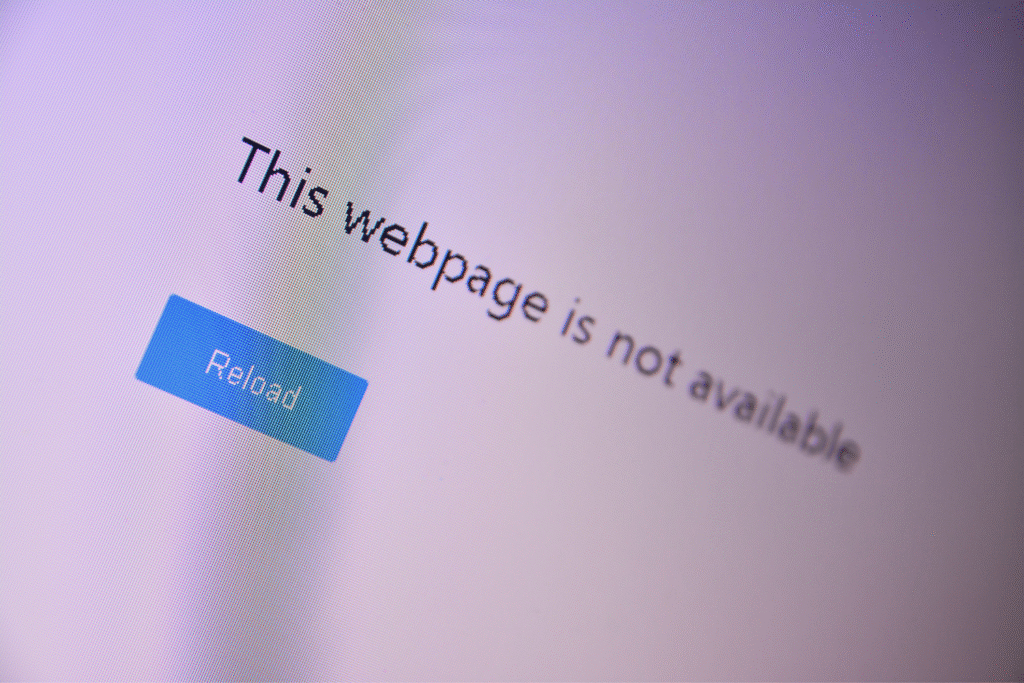Hiring the wrong remote employee can lead to wasted time, lost productivity, or added costs, and it often starts with misreading fit. Many companies screening Filipino candidates rely on U.S.-style interviews, overlooking cultural signals, local job expectations, and essential tools like background checks or education verification. Employers also underestimate the importance of infrastructure gaps, internet reliability, and how employment laws and the Data Privacy Act affect what you can ask or review.
This guide breaks down a step-by-step process for screening Filipino candidates that helps you verify skills, assess remote readiness, and make informed hiring decisions.
Why You Need a Different Screening Process for the Philippines
Hiring in the Philippines involves more than just checking qualifications. Filipino candidates bring a mix of cultural values, education styles, and job experiences that don’t always align with U.S. expectations. To avoid missteps, employers must understand several factors that shape how applicants present themselves.
Cultural values like pakikisama and high-context communication shape how candidates respond in interviews.
Filipinos often aim to preserve harmony. This value, called pakikisama, can lead candidates to agree with instructions or avoid saying “no”—even when they have concerns. High-context communication also means some answers are indirect, relying on tone or facial expression. Companies must read between the lines to measure real fit and avoid assumptions.
BPO history and Western exposure influence skill sets—but not always as expected
Many applicants list experience in business process outsourcing (BPO), which often involves working with American clients. While this background helps with English fluency and remote tools, it doesn’t always guarantee critical thinking or leadership skills. Employers need to go beyond the job title and verify what each role involves.
Infrastructure readiness and regional differences matter more than many realize
Not all locations in the Philippines have the same internet speed or power reliability. Screening should include tools that check for stable connectivity, especially if the position requires video calls or cloud-based platforms. Areas like Metro Manila may offer stronger setups, but even within one city, service quality can vary by neighborhood.
What to Look for in a Filipino Resume
Many resumes from the Philippines follow a different format. Applicants may include photos, marital status, or personal background—common in the country but less relevant to the job. Focus instead on the sections that reveal remote readiness, qualifications, and experience with global employers.
Education: Recognizing top universities, degree types, and licenses (CPA, PRC, etc.)
Look for institutions like the University of the Philippines, Ateneo de Manila, and De La Salle. These schools are known for strong academic standards. Degrees backed by licenses—such as CPA for accountants or PRC registration for teachers—show that the applicant passed government-administered licensure exams and holds a verified professional qualification.
Work history: Prior experience with Western clients or international companies
Candidates who’ve worked with U.S. or Australian firms often have better English communication and an understanding of remote tools. Review job descriptions and responsibilities, not just job titles. Details about platforms used (e.g., Slack, Trello, QuickBooks) can offer additional information about their readiness for your systems.
Green flags: Remote work tools, home office setup, progression in roles
Applicants who mention tools like Zoom, Google Workspace, or CRMs and note internet speed or dedicated workspace are usually more prepared for remote work. Career growth also matters. Consistent promotions or expanded responsibilities suggest reliability and long-term potential.
Red flags: Unaccredited schools, vague duties, frequent short stints
Some institutions lack formal recognition. Use verification services or government websites to confirm credentials. Also, be cautious of resumes with unclear tasks or short-term roles without explanation. These patterns may point to issues with attendance, fit, or integrity.

How to Interview Filipino Candidates (Cultural Do’s and Don’ts)
A strong resume is just the start. How candidates communicate in interviews reveals their fit for remote work—and cultural sensitivity plays a significant role. Adjust your approach to encourage openness and get honest, valuable insights.
Open with rapport: Why small talk matters more in Filipino interviews
Filipinos often build trust through light conversation before diving into serious topics. A few minutes of asking about their location, recent holidays, or interests helps ease nerves and encourages more genuine answers later in the process.
Ask indirectly: Sample phrasing that encourages honest responses
Confrontation may lead to polite but inaccurate replies. Instead of asking, “Can you work without supervision?” try “In your past role, how did you manage tasks when your manager was unavailable?” This allows candidates to share stories and show their skills without feeling pressured.
Read between the lines: Interpreting “yes,” qualifiers, and non-verbal cues.
Filipinos may say “yes” to acknowledge a question, not necessarily to agree. Watch for tone, facial expression, or hesitation. These may signal confusion, concern, or disagreement. Employers should listen closely and ask follow-up questions to clarify.
Questions that uncover autonomy, time zone management, and collaboration style
Instead of generic prompts, ask about handling deadlines without reminders or working with teams in other countries. These questions help determine if the applicant can manage tasks independently while adapting to your business hours and collaboration tools.

Interview Questions That Reveal Real Fit
The right questions bring out more than rehearsed answers. They help you evaluate how candidates think, adapt, and manage remote responsibilities.
Time management and remote productivity
Ask how they structure their day, handle distractions or track tasks. Responses should include specific tools or systems used. This helps verify that they can stay productive without in-person supervision.
Cross-cultural communication scenarios
Use questions like, “What would you do if you received unclear instructions from a foreign client?” This reveals how well they manage ambiguity and shows an understanding of cross-cultural dynamics—especially when working with Americans or global teams.
Handling unclear instructions across time zones
Follow up with, “If you couldn’t reach your manager due to a time zone difference, how would you handle it?” You’re measuring problem-solving and initiative, two essential qualities in remote teams across countries.
Cultural adaptation and feedback response
Ask about a time they received feedback from a foreign employer. A strong answer shows they listened, improved, and communicated well. This also helps identify candidates who can accept correction without taking it personally.
Internet, power backup, and workspace readiness
Every serious applicant should mention internet speed, backup plans for power outages, and a quiet, dedicated workspace. As infrastructure issues affect attendance and output, it’s a good practice for employers to verify these details during the screening process, especially for remote roles.

Assessment Ideas to Validate Skills (And Avoid Mistakes)
Strong interviews don’t always guarantee strong performance. That’s why skills testing is essential when screening Filipino candidates. It helps companies verify that the applicant can do the job, not just talk about it.
Why assessments are crucial in the Philippine context
In the Philippines, many applicants are used to tests during hiring. Culturally, exams are expected and seen as fair. Assessments can help reduce bias, measure relevant skills, and offer useful insights when selecting candidates. Some organizations also use earlier versions of skill tests to track improvement across applicants and roles.
What a culturally calibrated test looks like
Effective tests reflect real work and tools used in the industry. Employers should create clear instructions and allow candidates to ask for clarification. Avoid confusing tasks, especially when testing written communication. For best results, use assessment platforms or services that match the candidate’s skill level and job type.
Examples by role: VA, marketer, bookkeeper, developer
For virtual assistants, assign tasks like email sorting, scheduling, or customer response writing. Marketers can draft social media content or outline campaigns for platforms like Facebook or other major sites. Bookkeepers can complete mock entries using tools common in the accounting field. Developers may complete coding tests through GitHub or other tools used by leaders in the tech industry.
How to evaluate results beyond technical correctness
Don’t just check if the answers are right. Review how candidates follow directions, meet deadlines, and use the available resources. Pay attention to communication style, presentation, and how they respond to feedback. Use tools like Loom or shared docs to review responses with your team and improve decision-making across users. Assessment results may help companies track strengths and improve future hiring decisions.
Screening should also include legal checks when needed. If your organization plans to verify criminal records, make sure to follow Philippine data privacy laws and use only approved government sites or third-party services.

Red Flags to Watch for During Screening
Even strong resumes and tests can miss signs of a bad fit. Employers must pay attention to signals that something’s off—especially when hiring remotely across countries.
Over-polished answers without substance
Some candidates rehearse responses that sound perfect but lack depth. Look for vague phrases or recycled stories with no real insight. A follow-up question often exposes gaps in knowledge or experience.
Hesitation to ask questions
Filipino applicants may avoid asking questions out of respect. However, it may reflect poor communication habits if they never ask for clarification, especially during test projects or interviews. In remote work, asking the right questions signifies independence and problem-solving.
Infrastructure gaps not disclosed
Applicants may skip over weak internet or lack of power backup. Use screening tools or ask direct but respectful questions about setup. If their account of their remote readiness seems inconsistent, it’s worth reviewing further.
Communication disconnects in follow-ups.
Delays in follow-ups may indicate competing priorities or limited interest in the role. These signs suggest they may not be ready to commit to your role fully.

Screening Timeline: How Long Should the Process Take?
A fast but structured hiring process helps you compete for top Filipino talent. Many skilled applicants get multiple offers. Still, employers should take time to conduct a full review and use the proper screening tools.
Week 1: Resume and first interview
Start with a resume review and a short video interview to check basic qualifications, communication, and interest. Use this round to identify potential candidates worth moving forward.
Week 2: Skills test and deep interview
Request a job-specific task or test and follow up with a second interview. This deeper conversation can cover skills, experience, values, and job expectations. Employers should note how candidates discuss their past work, handle feedback, and explain their process.
Week 3: Final decision and offer
Use week three to compare final candidates, conduct background checks (if needed), and make a decision. Be mindful of local employment laws and the Data Privacy Act when verifying criminal records or personal data through government databases or services.
Time zone tips for staying efficient without rushing
Keep your calendar flexible. Many interviews or assessments may happen outside U.S. business hours. Use tools like Calendly or World Time Buddy to find overlap, and opt for asynchronous tools like email or recorded video when real-time isn’t possible.
How to Successfully Screen Filipino Candidates
To screen Filipino candidates effectively, adapt your process to fit the local context. Review resumes for licensed education, real-world tools, and remote experience. Use culturally aware interviews to uncover proper fit and assess remote readiness through skill tests. Watch for red flags like vague responses or poor follow-through, and stay compliant with local employment laws and data privacy rules. A transparent, respectful, and well-timed process helps you find qualified applicants ready to support your team from day one.
Frequently Asked Questions
What is the best way to screen a Filipino virtual assistant?
Use a structured hiring process that includes resume checks, cultural-fit interviews, and job-specific skills assessments.
How do I know if a Filipino candidate is telling the truth in an interview?
Ask detailed follow-up questions and confirm answers through test tasks, reference checks, and verified records when allowed.
What interview questions work well with Filipino applicants?
Use open-ended questions that explore real work situations, remote problem-solving, and feedback handling.
How do I test remote readiness when hiring in the Philippines?
Confirm internet speed, power backup, home office setup, and experience with remote tools like Google Workspace and Zoom.
Should I use the same resume standards I use for U.S. hires?
Focus on actual skills, responsibilities, and tool usage since Filipino resumes often include personal information or different formats.
References
- Republic of the Philippines. (2012). Republic Act No. 10173: Data Privacy Act of 2012. National Privacy Commission. https://privacy.gov.ph/data-privacy-act/
- Asian Development Bank. (2007, March). An analysis of the Philippine business process outsourcing industry. https://www.adb.org/publications/analysis-philippine-business-process-outsourcing-industry
- Admin. (2023, December 13). LET Majorship guide 2023–2024 for non-education bachelor’s degree holder. PRC Board. https://www.prcboard.com/LET-Majorship-Guide-for-Non-Education-Bachelors-Degree-with-18-Units-of-Professional-Education




